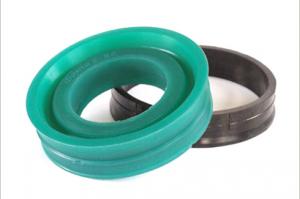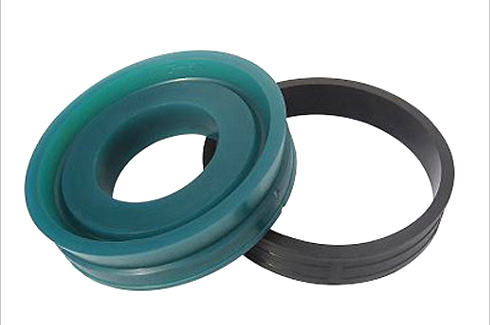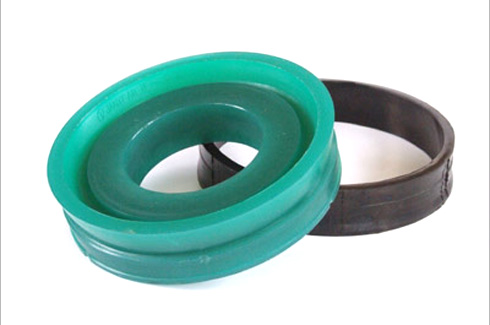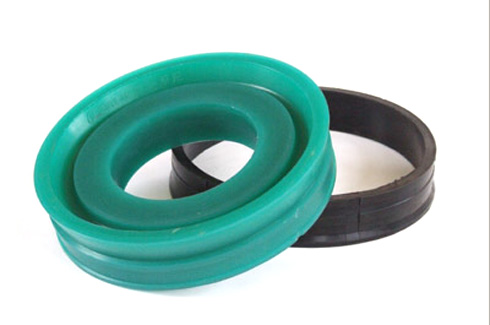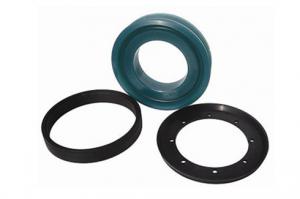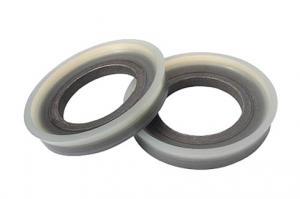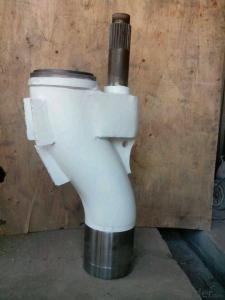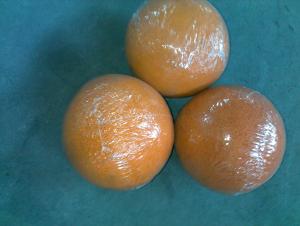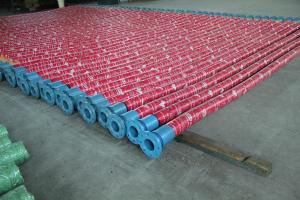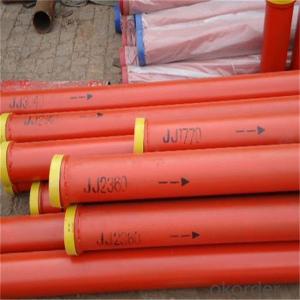Concrete Pump Zoomlion Seal Piston DN180 - DN230
- Loading Port:
- China Main Port
- Payment Terms:
- TT OR LC
- Min Order Qty:
- -
- Supply Capability:
- -
OKorder Service Pledge
Quality Product, Order Online Tracking, Timely Delivery
OKorder Financial Service
Credit Rating, Credit Services, Credit Purchasing
You Might Also Like
Brand: Schwing, Putzmeister, Sany,Zoomlion, IHI, Kyokuto, Sermac
Size: DN180 - DN230
Other products:
1) ST52 steel pipe, elbow, reducer
2) Wear-resisting board and Cuts ink
3) Coupling and seal ring for Putzmeister,Schwing, Sany
4) Rubber hose
5) Cleaning series and others
- Q: What are the different types of concrete pump hopper pins?
- There are several types of concrete pump hopper pins, including snap pins, lynch pins, and clevis pins. These pins are used to secure the hopper to the pump and ensure it stays in place during operation.
- Q: What is the role of a concrete pump hopper agitator blade?
- The role of a concrete pump hopper agitator blade is to ensure the consistency and flow of the concrete while it is being pumped. The agitator blade is designed to mix the concrete in the hopper, preventing it from settling or becoming too thick. By continuously stirring the concrete, the agitator blade helps to maintain its proper consistency, making it easier to pump and ensuring a more uniform distribution of the material. This is particularly important when working with large volumes of concrete or when pumping over long distances, as it helps to prevent blockages and maintain a smooth and efficient pumping process. Overall, the agitator blade plays a crucial role in the successful operation of a concrete pump, ensuring that the concrete remains in a workable state throughout the pumping process.
- Q: How often should hopper grate springs be inspected or replaced in a concrete pump?
- To ensure optimal performance and prevent potential issues, it is essential to regularly inspect the hopper grate springs in a concrete pump. The frequency of inspection or replacement depends on factors such as pump usage, operating conditions, and manufacturer recommendations. However, a general rule is to inspect the springs at least every six months or after every 500 hours of operation, whichever comes first. During the inspection, thoroughly examine the springs for any signs of wear, damage, or deformation. Check for cracks, excessive rust, or loss of tension. If any of these issues are found, immediate replacement is necessary to maintain proper functioning of the hopper grate system. Regular inspection and timely replacement of hopper grate springs are vital to prevent clogging or blockage in the hopper, which can lead to pump malfunctions or downtime. It is advisable to consult the concrete pump manufacturer's guidelines or seek assistance from a professional technician to determine specific inspection and replacement intervals based on the pump's make and model.
- Q: How often should hopper grate pin retainers be inspected or replaced in a concrete pump?
- To ensure proper functioning and prevent potential issues, it is important to regularly inspect hopper grate pin retainers in a concrete pump. Ideally, these inspections should be conducted on a monthly basis. However, the frequency of inspections may vary depending on usage conditions and manufacturer recommendations. During these inspections, it is essential to carefully examine the hopper grate pin retainers for any signs of wear, damage, or corrosion. If any of these issues are detected, immediate replacement is necessary to maintain the concrete pump's efficiency and safety. Furthermore, it is crucial to follow the manufacturer's guidelines regarding the lifespan of the hopper grate pin retainers. Some manufacturers may advise replacing them after a certain number of operating hours, while others may suggest replacement based on the condition observed during inspections. Regular inspections and timely replacement of hopper grate pin retainers play a crucial role in preventing malfunctions or accidents during concrete pumping operations. It is highly recommended to consult the concrete pump's manual or contact the manufacturer for specific guidelines on inspection and replacement intervals for hopper grate pin retainers.
- Q: Can I get spare parts for both concrete pumps with and without lubrication systems?
- Yes, you can get spare parts for both concrete pumps with and without lubrication systems. Many manufacturers and suppliers offer a wide range of spare parts for different types and models of concrete pumps. These spare parts include components like valves, cylinders, pistons, seals, hoses, and filters, among others. Whether your concrete pump has a lubrication system or not, you should be able to find the necessary spare parts to maintain and repair it. It is recommended to consult the manufacturer or a reputable supplier to ensure you get the correct spare parts for your specific concrete pump model.
- Q: How often should hopper grate levers be inspected or replaced in a concrete pump?
- Hopper grate levers in a concrete pump should be inspected regularly, ideally after every use or at least once a week, to ensure they are in proper working condition. Depending on the wear and tear, they may need to be replaced periodically to maintain the efficiency and safety of the pump.
- Q: If the concrete pump valve jam how to judge and deal with?
- When the pipe is blocked, the pump shall be taken repeatedly, reversing the pump, and gradually pump the concrete at the pump's outlet back to the hopper and mix again
- Q: What are the advantages of using genuine spare parts for my concrete pump?
- Using genuine spare parts for your concrete pump comes with several advantages. First and foremost, genuine spare parts are specifically designed and manufactured by the original equipment manufacturer (OEM) for your concrete pump. This means that they are made to fit perfectly and function optimally with your specific model. Using genuine parts ensures compatibility and reduces the risk of compatibility issues or malfunctions that can arise from using aftermarket or counterfeit parts. Secondly, genuine spare parts are made from high-quality materials and undergo rigorous testing to meet strict quality standards. This ensures their durability, reliability, and performance, ultimately resulting in longer service life and reduced downtime for your concrete pump. Genuine parts are designed to withstand the demanding conditions and heavy loads that concrete pumps typically operate under. Moreover, using genuine spare parts helps maintain the warranty and integrity of your concrete pump. Many manufacturers offer warranties that cover the use of genuine parts. By using genuine parts, you can take advantage of the warranty benefits and avoid any potential issues that may arise from using non-genuine parts, which could void the warranty. Additionally, genuine spare parts often come with technical support and expertise from the manufacturer. OEMs have extensive knowledge and experience with their equipment, and their technical support team can provide guidance, advice, and troubleshooting assistance in case any issues arise. This can be extremely beneficial in minimizing downtime and maximizing the efficiency of your concrete pump. Lastly, using genuine spare parts ensures the safety of your equipment and operators. Genuine parts are manufactured to meet strict safety regulations and standards, reducing the risk of accidents or failures that can result from using substandard or counterfeit parts. The safety and well-being of your team should always be a top priority, and using genuine parts helps ensure their protection. In conclusion, the advantages of using genuine spare parts for your concrete pump include compatibility, quality, durability, warranty coverage, technical support, and safety. Investing in genuine parts not only enhances the performance and longevity of your equipment but also provides peace of mind for both you and your team.
- Q: How to judge the concrete pipeline blockage?
- When the conveying pressure increases gradually, while the material level of the hopper does not fall, the pipe outlet is not out of stock, the pump vibrates, and the pipe is accompanied by strong vibration and displacement, the pipe blockage can be determined.
- Q: How does a concrete pump hopper grate prevent clogs?
- A concrete pump hopper grate prevents clogs by acting as a filtering mechanism. It allows only small-sized aggregates to pass through, while blocking larger debris or chunks from entering the pump system. This ensures a smooth flow of concrete, preventing any obstructions or blockages that could potentially cause damage to the pump or hinder the pumping process.
Send your message to us
Concrete Pump Zoomlion Seal Piston DN180 - DN230
- Loading Port:
- China Main Port
- Payment Terms:
- TT OR LC
- Min Order Qty:
- -
- Supply Capability:
- -
OKorder Service Pledge
Quality Product, Order Online Tracking, Timely Delivery
OKorder Financial Service
Credit Rating, Credit Services, Credit Purchasing
Similar products
Hot products
Hot Searches
Related keywords
